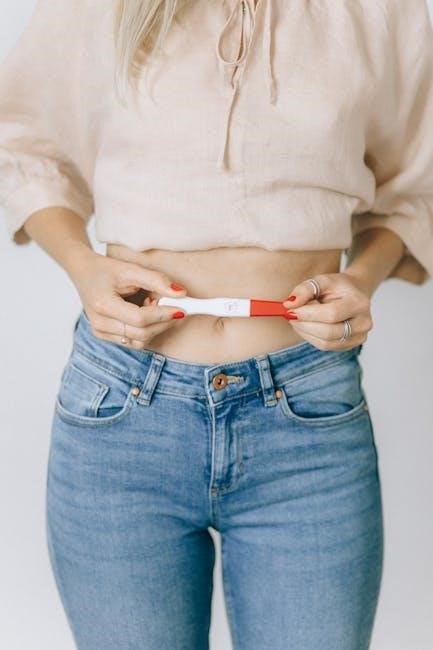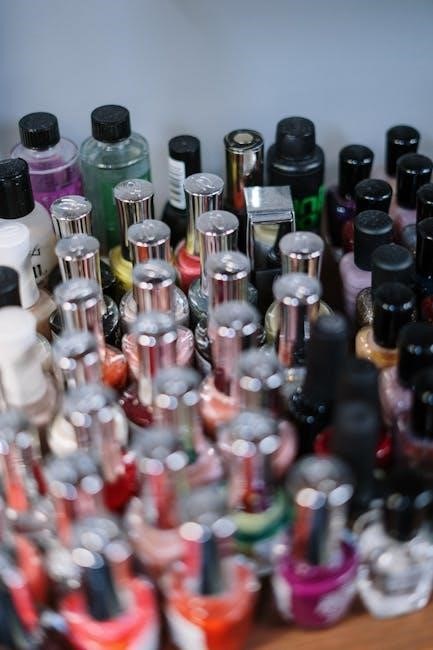
Apivar Strips are a chemical treatment for controlling varroa mites in beehives. They are easy to use, requiring no special tools, and are hung in the brood chamber.
They work by releasing a miticide that kills mites on contact, helping to protect the hive and improve bee health.
Overview of Apivar Strips and Their Purpose
Apivar Strips are a chemical treatment designed to control varroa mite infestations in beehives. Their primary purpose is to reduce mite populations, protecting the colony’s health.
The strips release a miticide that kills mites on contact, ensuring effective treatment. They are simple to use, requiring no special equipment, and are hung directly in the brood chamber.
Apivar Strips are a crucial tool for beekeepers to maintain hive health and prevent the spread of diseases associated with varroa mites. They are widely recommended for their ease of use and effectiveness.
When to Use Apivar Strips
Apivar Strips are typically used in the spring and autumn, avoiding periods when supers are on the hive for honey collection. Apply them when mite levels are high to ensure optimal treatment effectiveness and protect the colony before and after nectar flow. Always follow the recommended schedule to maintain hive health and prevent resistance.
Recommended Timing for Application
The optimal time to apply Apivar Strips is during spring and autumn, when supers are not in use. In the spring, apply before bees start collecting nectar to prevent mite population spikes. In autumn, apply after honey harvest to ensure mite control going into winter. This timing maximizes effectiveness and minimizes disruption to hive activities. Always avoid using Apivar when supers are on the hive to prevent contamination of honey products.
Spring and Autumn Treatment Schedule
Apivar Strips should be applied twice annually: once in spring before nectar flow begins and once in autumn after honey harvest. Spring treatment targets mites before they multiply, while autumn treatment ensures mite populations are controlled heading into winter. Each application lasts 6-8 weeks, with strips removed after this period to prevent resistance. Timing is crucial to ensure effectiveness and protect hive health throughout the year. Proper scheduling helps maintain strong colonies and reduces the risk of mite-related issues.
How to Apply Apivar Strips
Hang Apivar Strips in the brood chamber, ensuring they are suspended where bees are most active. Use two strips per chamber, separating them evenly between frames for optimal coverage.
Preparation Steps Before Application
Before applying Apivar Strips, remove any supers from the hive to ensure proper treatment. Separate the double strips and inspect them for damage. Ensure the hive is free of honey flow to maximize effectiveness. Ideal timing for application is during spring or autumn, avoiding nectar collection periods. This preparation ensures optimal miticide distribution and bee safety, adhering to best practices for varroa control. Proper setup is crucial for successful treatment outcomes.
Number of Strips per Brood Chamber
Use 2 Apivar Strips per brood chamber for effective varroa control. This ensures adequate coverage, especially in larger colonies. For smaller colonies or nuclei, 1 strip is sufficient. Proper distribution guarantees maximum exposure to the miticide, enhancing treatment success. Always follow the recommended dosage to prevent under or over-treatment, ensuring hive health and safety.
Proper Placement of Apivar Strips
Hang Apivar Strips in the brood chamber where bee activity is highest. Place them between frames, ensuring bees can access both sides for optimal miticide exposure.
Positioning in the Brood Chamber
Apivar Strips should be placed in the brood chamber where bee activity is highest, typically near the cluster. Hang each strip between two frames, ensuring bees can access both sides. This positioning maximizes contact with the miticide, effectively reducing varroa mite populations. Proper placement ensures even distribution of the treatment, helping to protect the hive from infestations without disrupting the bees’ natural behavior or hive operations.
Distance Between Strips for Optimal Coverage
Apivar Strips should be spaced evenly to ensure proper coverage. Hang each strip between two frames, leaving at least two frames between strips. This allows bees to move freely and ensures the miticide is distributed effectively. Place strips near the cluster, typically between frames 3 and 4, to target high bee activity. Proper spacing prevents overcrowding and ensures optimal treatment efficacy, helping to minimize varroa mite populations without disrupting hive operations.

Treatment Frequency and Duration
Apivar strips should be left in the hive for 6-10 weeks, depending on brood size. Treat twice a year: spring before nectar flow and autumn after harvest.
Avoid using Apivar strips every treatment cycle to prevent mite resistance. Adjust duration based on brood size for optimal effectiveness.
How Long to Leave the Strips in the Hive
Apivar strips should remain in the hive for 6 to 10 weeks, depending on the size of the brood. Larger broods require a longer treatment duration.
Strips must be removed after 6-8 weeks to avoid prolonged exposure and prevent mite resistance. Leaving them longer than recommended can reduce effectiveness and harm the colony.
Ensure to follow the product guidelines and observe hive conditions to determine the exact duration for optimal results.
Frequency of Treatment to Avoid Resistance
Apivar strips should be used no more than twice a year to prevent varroa mites from developing resistance. Treat once in the spring before nectar flow begins and once in the autumn after honey harvesting.
Overuse can lead to mites becoming resistant to the treatment, reducing its effectiveness. Always follow the recommended schedule to ensure the product remains effective and safe for the colony.

Safety Precautions and Considerations
Always wear protective clothing, including gloves and a veil, when handling Apivar strips to avoid skin or eye irritation. Avoid using strips during honey collection to prevent contamination. Keep strips out of reach of children and pets to ensure safe application and handling. Follow all instructions carefully to minimize risks to both bees and beekeepers.
Important Safety Measures for Beekeepers
When handling Apivar strips, beekeepers must wear protective clothing, including gloves and a veil, to avoid skin contact or inhalation of the miticide. Ensure the hive is calm before application to minimize disturbances. Avoid using the strips during honey flow or when supers are in place to prevent contamination. Keep the strips away from children and pets. Always follow the recommended dosage and application guidelines to ensure the safety of both the bees and the beekeeper. Proper ventilation in the hive is crucial to prevent the buildup of residues. Dispose of used strips according to local regulations to protect the environment. Regularly inspect the hive after treatment to monitor for any adverse reactions and ensure the health of the colony. By adhering to these safety measures, beekeepers can effectively manage varroa mites while safeguarding their bees and themselves.

Effectiveness of Apivar Strips
Apivar strips effectively reduce varroa mite populations through contact, ensuring hive health. Their demonstrated success makes them a reliable choice for beekeepers.
How Apivar Reduces Varroa Mite Populations
Apivar strips release a miticide that kills varroa mites on contact, effectively reducing their populations. The active ingredient works as mites come into contact with the strip, ensuring a significant decline in infestations. By placing the strips in areas of high bee activity, the treatment targets mites where they are most prevalent. This method is both efficient and targeted, making it a reliable solution for maintaining hive health and reducing the risk of mite-related diseases among the colony.
Demonstration Videos andGuides
Demonstration Videos and Guides
Demonstration videos and guides are available to help beekeepers use Apivar strips effectively. These resources, such as Veto-pharma’s revised tutorial, provide step-by-step instructions for application, placement, and removal. Videos like the one recorded at Veto-pharma’s apiary in France, featuring Freddy Proni, demonstrate proper techniques. These guides ensure beekeepers can confidently apply the strips, maximizing their effectiveness while minimizing risks to the hive. They also offer tips for optimal placement and timing, ensuring successful varroa mite control and improved hive health.

Removing the Strips
Remove Apivar strips after 6-8 weeks to prevent residue buildup and ensure effectiveness. Proper removal is essential for maintaining hive health and preventing mite resistance.
Proper Removal Techniques
Properly removing Apivar strips ensures hive safety and prevents residue buildup. Carefully pull the strips out, avoiding damage to the comb or frames. Remove all strips at once, even if partially degraded. Dispose of them away from the hive to prevent contamination. This method ensures the hive remains clean and ready for future treatments, maintaining bee health and preventing mite resistance. Always follow the manufacturer’s guidelines for disposal to protect the environment and your bees.
Best Practices for Using Apivar Strips
Use 2 strips per brood chamber, spaced evenly between frames. Apply before nectar flow and remove after 6-8 weeks. Avoid overuse to prevent resistance.
Key Tips for Successful Treatment
For optimal results, use 2 Apivar strips per brood chamber, ensuring even distribution between frames. Apply strips before the nectar flow begins to maximize effectiveness.
Hang strips in areas of highest bee activity to ensure proper contact with the miticide. Remove strips after 6-8 weeks to avoid prolonged exposure and prevent resistance.
Do not use Apivar strips during honey supers to prevent contamination. Ensure the hive is free of supers before application for best results. Always follow the recommended treatment schedule to maintain hive health and efficacy of the product.